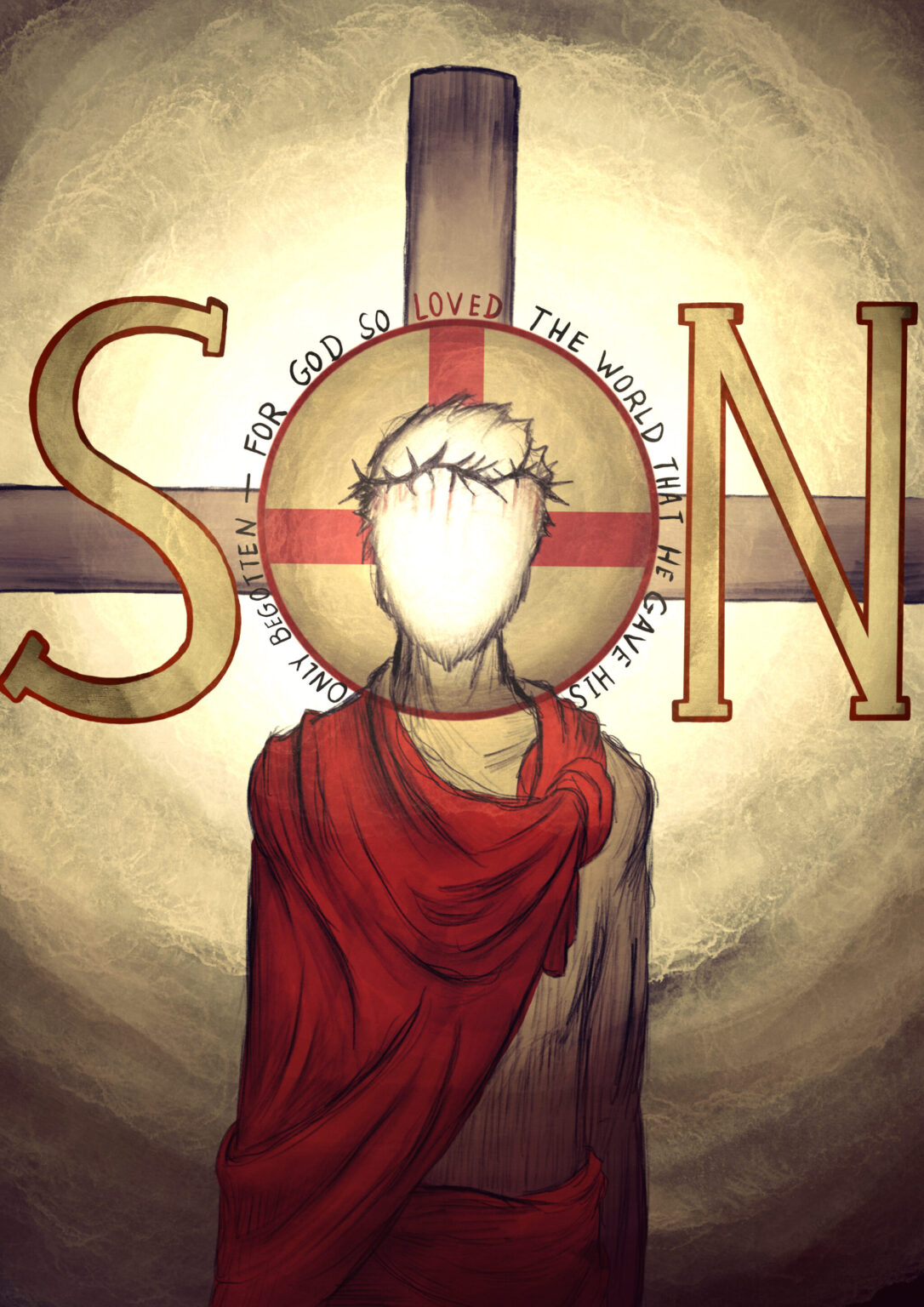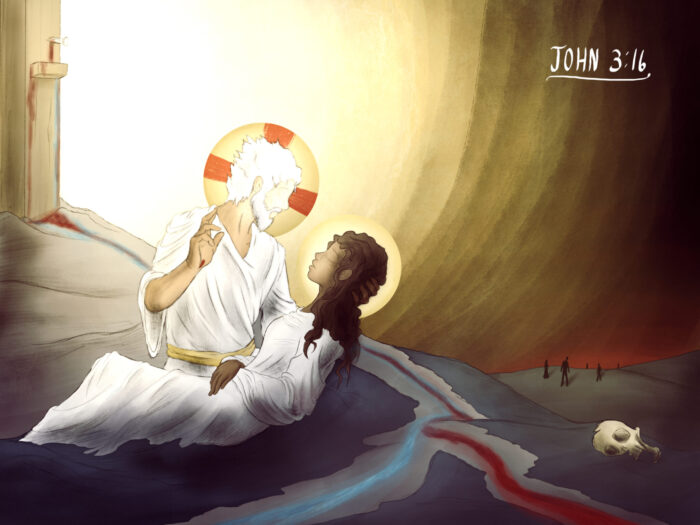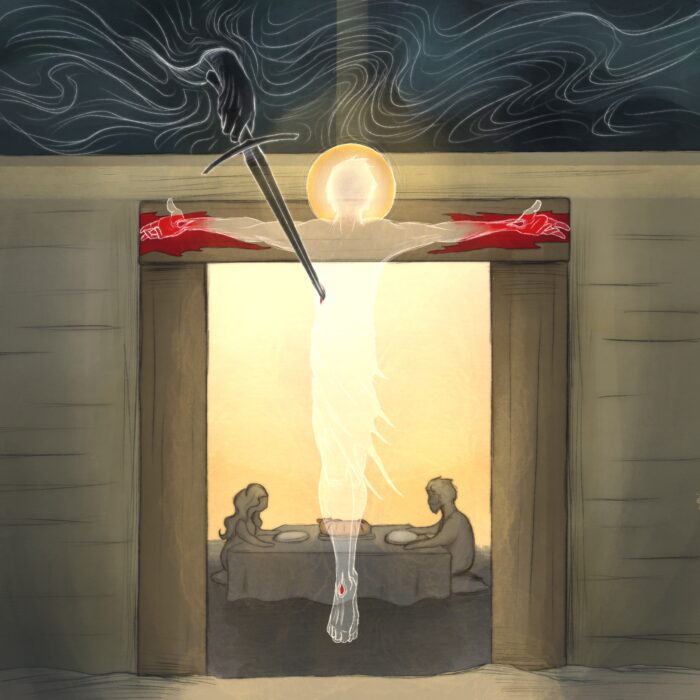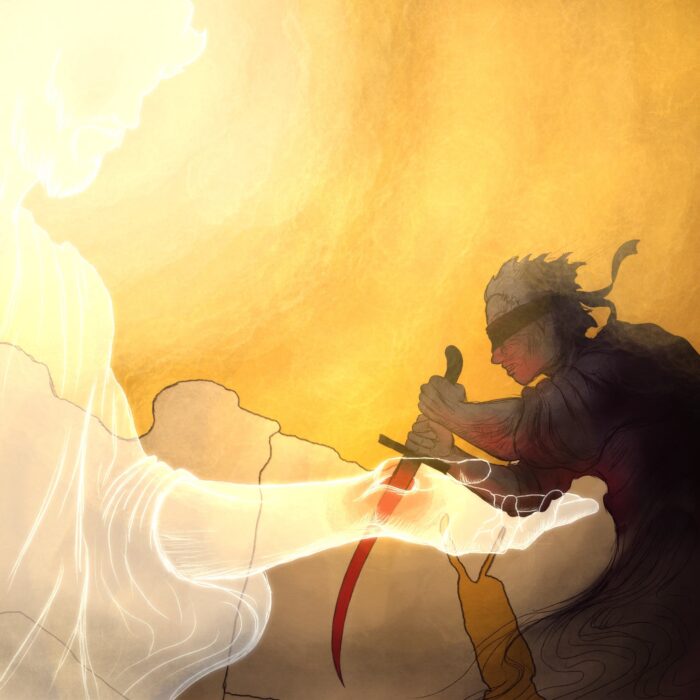
“For God so loved the world that He gave His only [begotten] Son, that whoever believes in Him should not perish, but have eternal life.”
It was difficult to visually depict this verse since it really is the heart of the Christian Faith and, indeed, the purpose for created reality itself. John’s writing is simple and yet deeply profound and it was a real challenge to try to communicate that in imagery.
In John 3:16 we see supreme act of infinite and perfect love. There is no greater love than what we find referenced in these verses. And so, with that in mind, what is the fruit–the goal–of perfect and infinite Love? There is so much to say about this topic, but below is a brief summary of my thinking regarding it.
In John 3:16 we see first that love gives. It gives all that it can give (since the Son is equal to and the perfect image of the Father, for the Father to give the Son is to give all that He is, in His Son). Love pours itself out utterly and without reserve. But that is not the end goal….the verse goes on to state that “eternal life” is the supreme goal of love. The Father’s giving of the Son and the Son’s giving of Himself is for the sake of giving eternal life.
And what is eternal life? John 17:3 tells us that eternal life is to know the Father and Jesus Christ whom He has sent. Of course, John’s gospel also teaches us that knowing the Father and knowing the Son are not two different knowledges….to know the Son is to know the Father, and we only know the Father in the Son, John 1:18, 14:6,9). This means that eternal life–the supreme goal of infinite love–is to know God in Jesus Christ (crucified and risen)……So, what does love do? It pours itself out in order to make God known.
God’s love is ultimately the giving of Himself in His Son in order that we might know Him. That understanding of love–and of this verse–is at the center of both images that I created.
__________________________
In this first picture I tried to communicate the primacy of the “God Made Known” concept by making Christ Himself the centerpiece. His face–the place where a person is usually “known”–is pictured as brilliant light in order to represent that He is the “light of the world” who reveals the beauty of Who God Is (it also alludes to God’s glory made known to us by the supernatural working of God upon regeneration, 2 Corinthians 4:6).
It is a special burden of John’s gospel to emphasize that Jesus makes God known to us with greatest clarity in His death and resurrection. It is the Crucified and Risen Jesus in whom we know God. Because of this the cross, the crown of thorns, the scarlet robe, and the cruciform halo are all employed. Each of these images emphasizes the depths to which God’s self-giving love descended in the passion of Christ. Note also that these tokens of suffering are engulfed in the light of Christ’s glory because through the lens of the resurrection we see that it was precisely in the sufferings of Jesus that we know the Name / Identity / Character / Glory of God with definitive clarity.
Lastly, the word “Son” is emphasized for two reasons. First, because the Son given (both in His incarnation and His death) is the heart of God’s love. And second, because God is Made known in His Son (John 1:18, Hebrews 1:2) and to know God thus revealed IS eternal life–which is the goal of God’s love toward His people.




